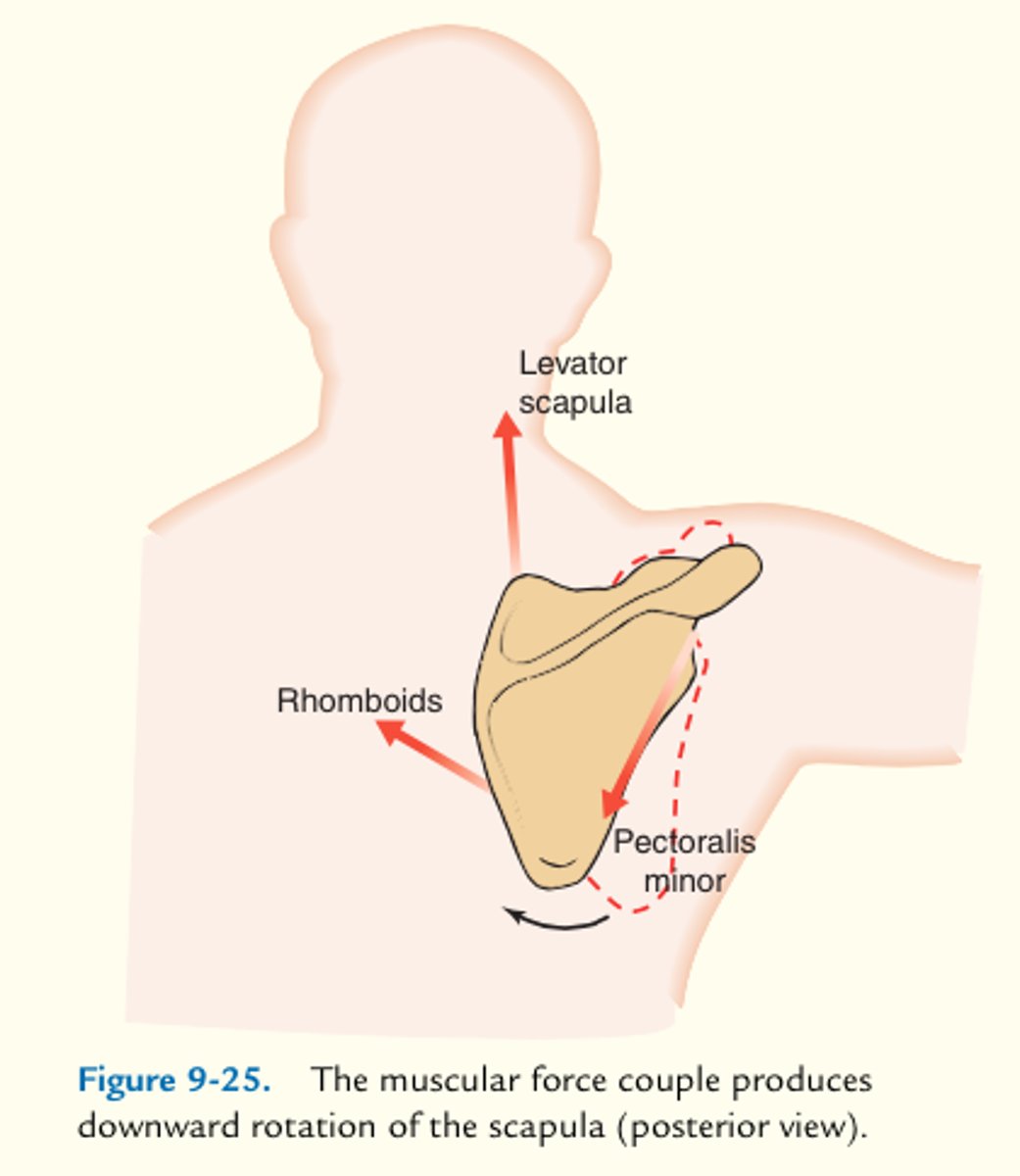kinesiology I - introduction to kinesiology
1/36
There's no tags or description
Looks like no tags are added yet.
Name | Mastery | Learn | Test | Matching | Spaced |
|---|
No study sessions yet.
37 Terms
what is kinesiology?
study of movement
active and passive structures involved
kinematics
bodies in motion (2 types--> translation + rotation)
translation
all parts of a rigid body move PARALLEL to and in SAME direction as every other part of the body
rotation
rigid body moves in a CIRCULAR path around some pivot point
ex: ball rolling down a ramp
what are the two kinematic chains?
open kinetic chain
closed kinetic chain
open kinetic chain
distal segment is moving (NOT FIXED) on the proximal segment
ex: throwing a football
closed kinetic chain
Proximal segment is moving on distal segment (FIXED)
ex: push up
is a squat open or closed kinetic chain?
BOTH!
closed--> at the knees, the femur moves on the tibia (proximal moving on distal)
open--> at the illiofemoral joint, the femur is moving upon the pelvis (femur is distal to pelvis)
what does "GAP" mean with goniometry?
"GAP"
A- active ROM --> patient moves FIRST
P- passive ROM --> physical therapist adds overpressure
concave on convex
roll and slide occur in the same direction
"CC" = ConCave --> SAME
convex on concave
roll and slide occur in opposite directions
"CV" - ConVex --> different
osteokinematics
descriptions of the motions of bones relative to the 3 cardinal planes
saggital plane
divides the body into a right and left side
corresponds to z-coordinate
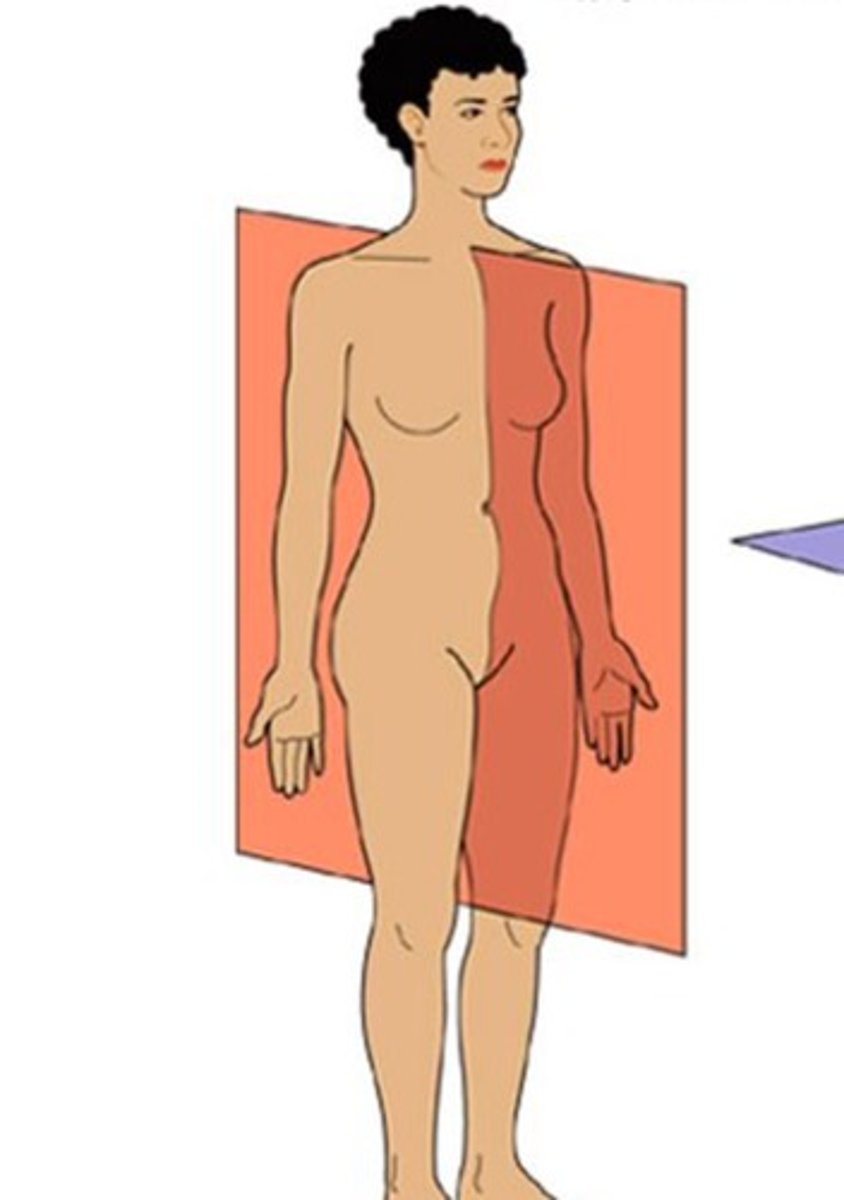
frontal (coronal) plane
divides the body into anterior and posterior parts
corresponds to y-coordinate
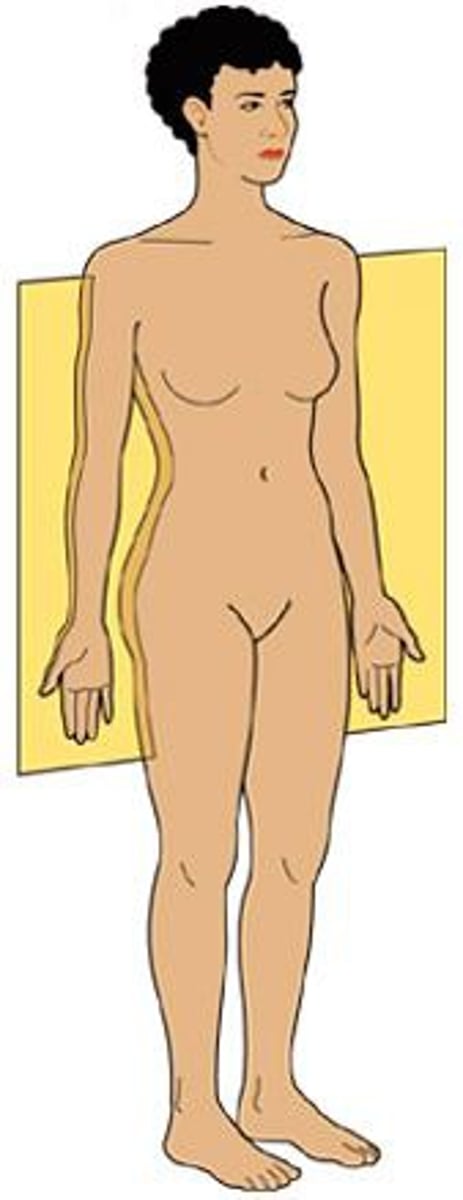
transverse plane
divides the body into upper and lower halves
corresponds to the x-coordinate

arthokinematics
description of motion between articular joint surfaces
-roll, slide/glide, pivot, spin, compression, distraction
roll (arthrokinematics)
multiple points along 1 rotating articular surface contact multiple points on another articular surface
1 bone rolling on another
ex: in shoulder abduction, the humeral head rolls superiorly in the glenoid fossa
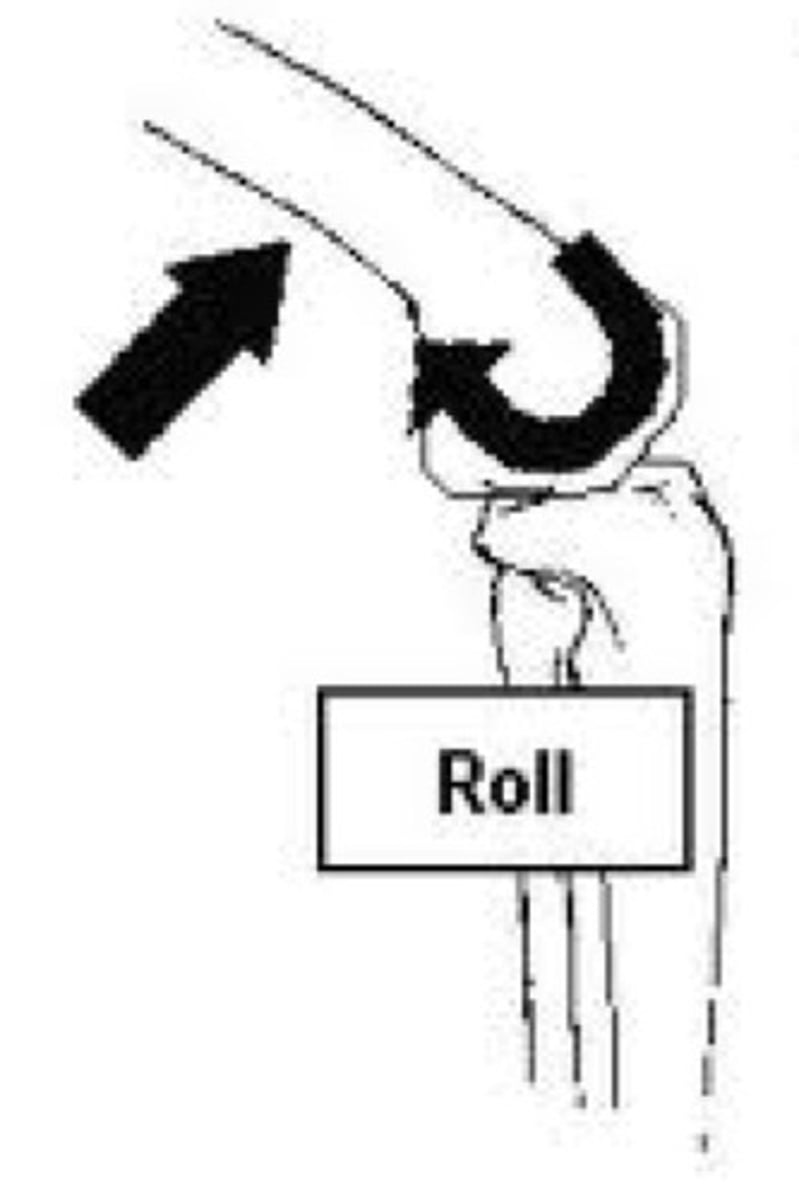
spin (arthrokinematics)
a single point on 1 articular surface rotates on a single point on another articular surface
1 body spinning on another
ex: posterior spin of the femoral head in the acetabulum during hip flexion
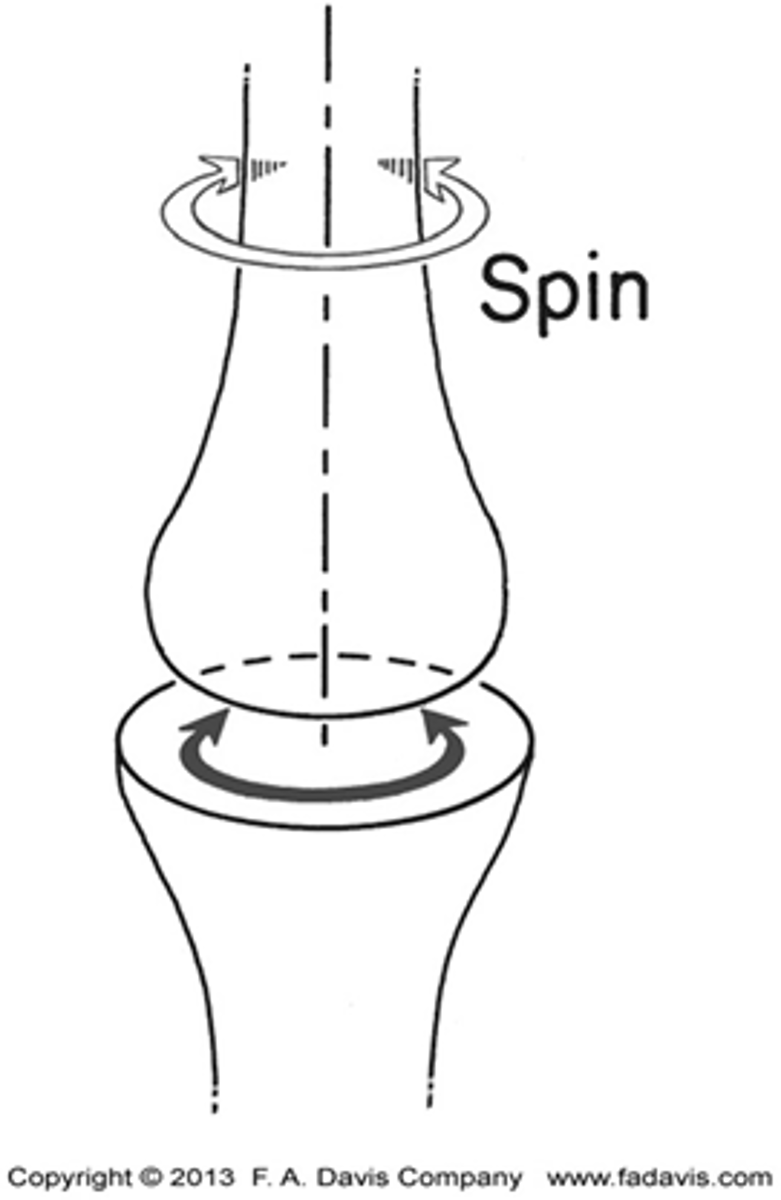
slide/glide (arthrokinematics)
a single point on 1 articular surface contacts multiple points on another articular surface
sliding of 1 joint surface over another
ex: during a squat the femur rolls posteriorly and slides anteriorly on the tibia (convex and concave--> roll/slide occurs in opposite directions)

kinetics
the effect of forces on the body
force is a push or pull that can produce, arrest, and modify movement
forces
both internal and external forces act upon the body
produce joint motion if perpendicularly oriented to axis of rotation (torque)
internal forces
produced from structures located within the body
may be active or passive
active internal force
muscle
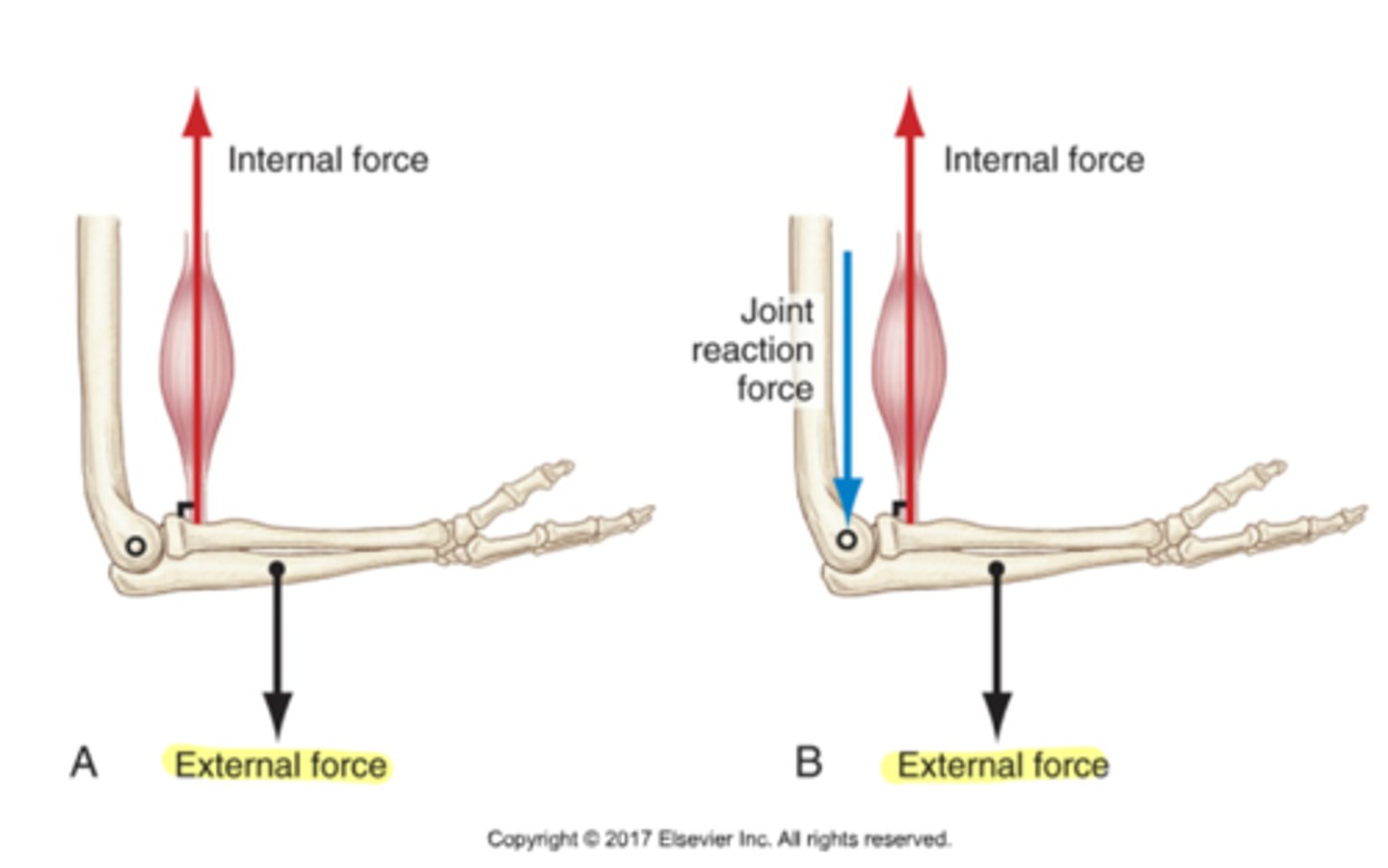
passive internal force
periarticular connective tissue, ligaments, joint capsules, etc
external forces
forces acting upon the body, that are outside the body
musculoskeletal torques
produced by forces applied perpendicular, at some distance to the axis of rotation
moment arm--> is the perpendicular distance between axis of rotation and the force
product of the moment arm and force produces ---> torque
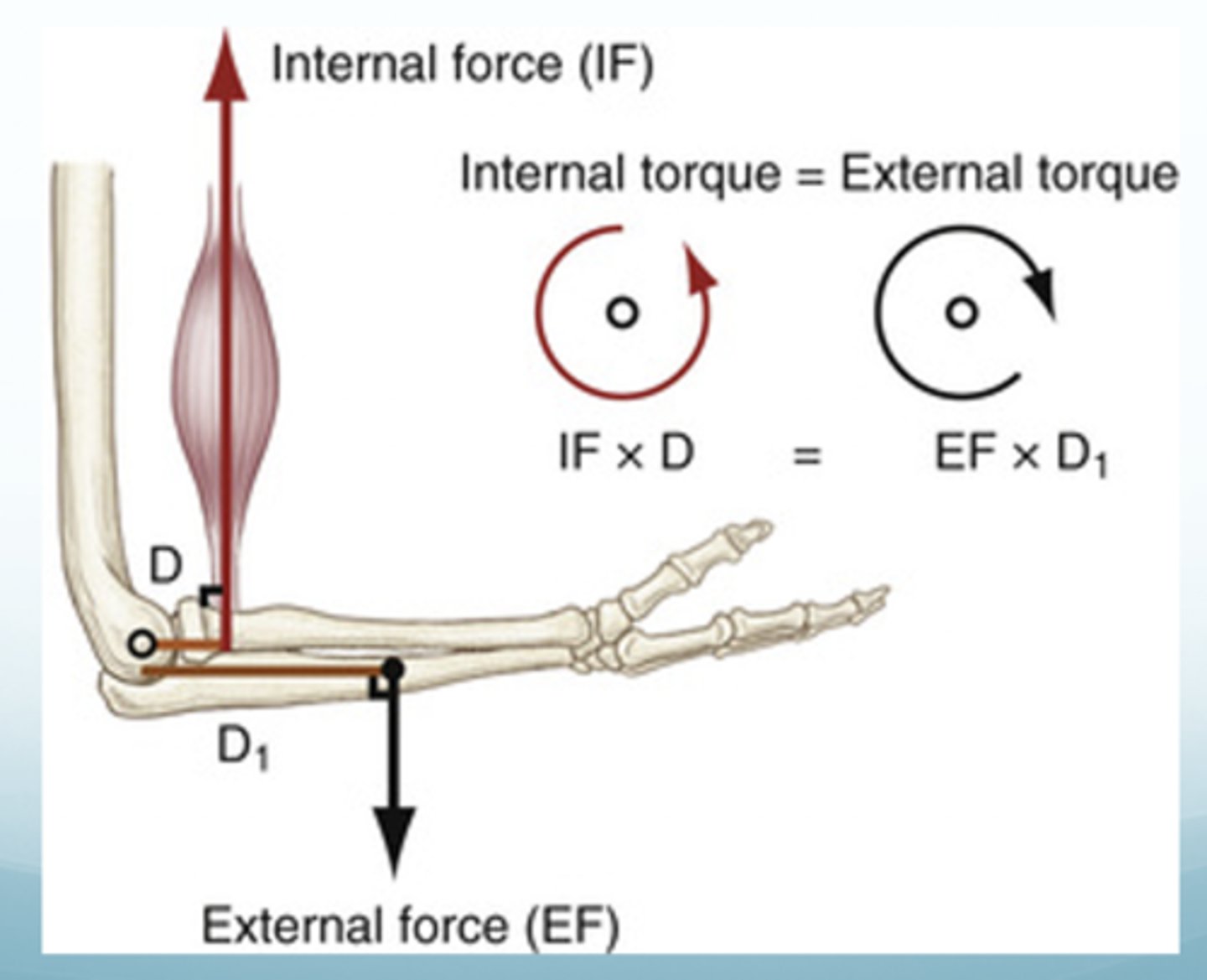
isometric muscle contraction
no motion occurs
no change in muscle length
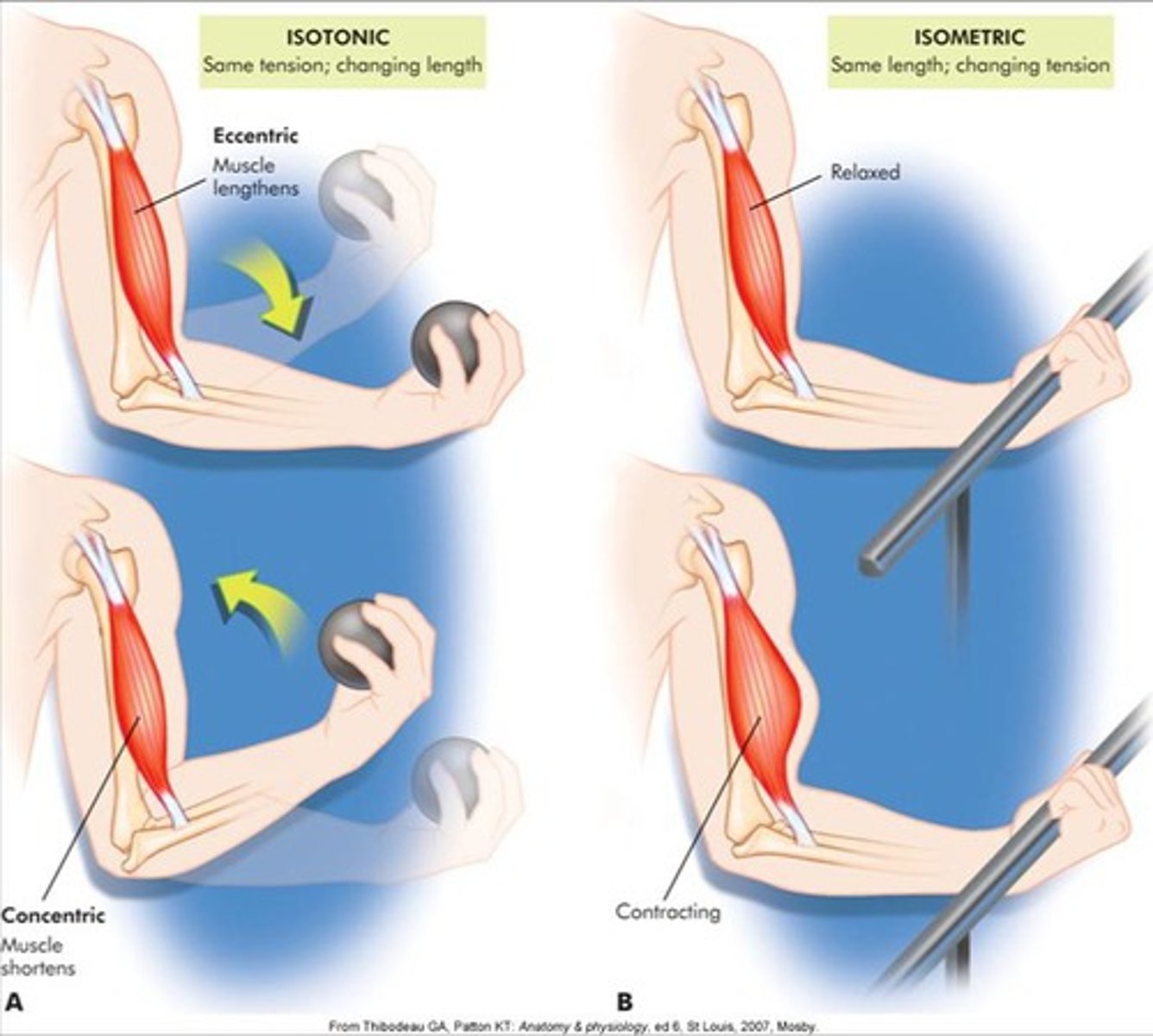
concentric muscle contraction
active shortening
ex: bicep curl
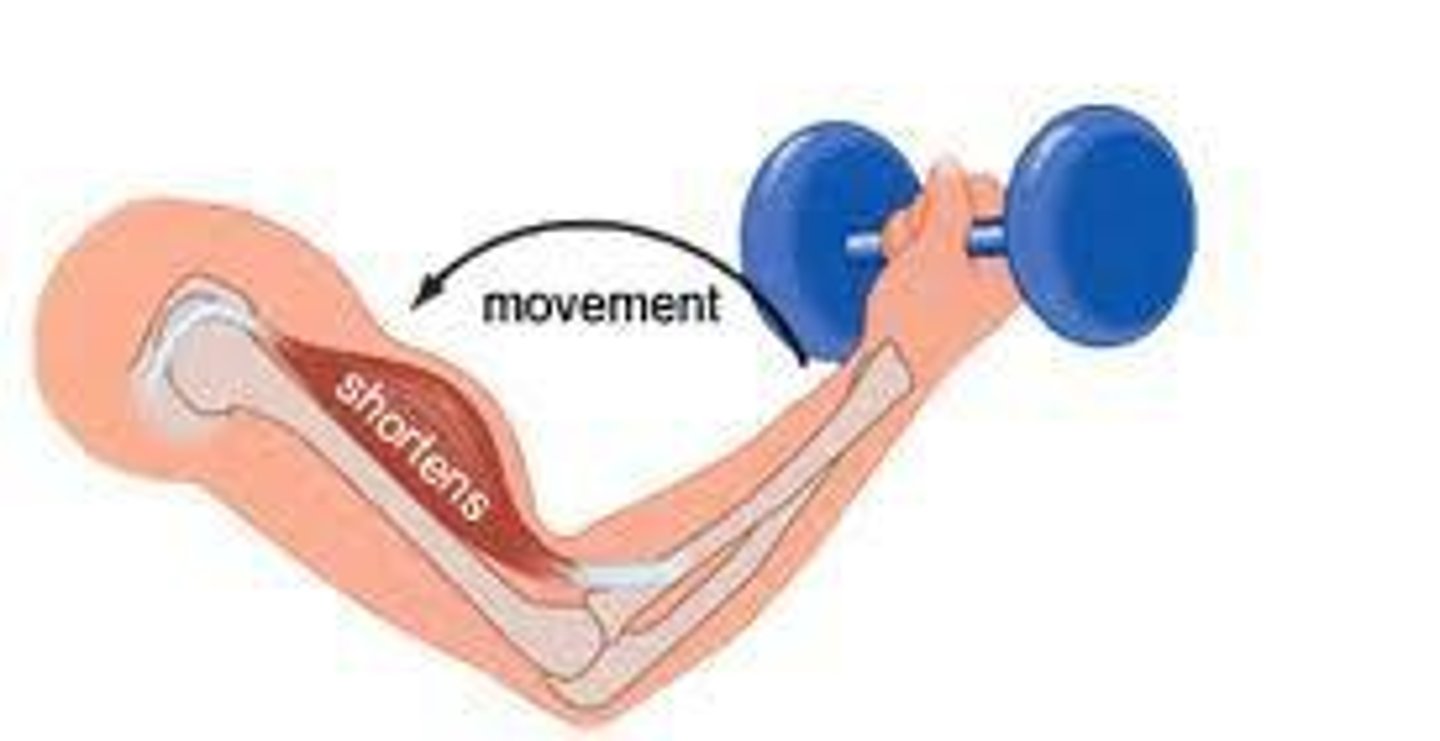
eccentric muscle contraction
active lengthening
ex: coming down from bicep curl

why is the elastic region in the stress-strain relationship good for post op patients?
the tissue already changed from surgery, therefore we want to stay in the elastic zone to ensure we protect it and prevent more change
if a patient has been dealing with the same chronic back injury for 15 years, what region of the stress-strain relationship curve should we want them in?
plastic zone, because he patient needs some sort of change, furthermore we are wanting a permanent change to the tissues to try and help
what does the ultimate failure point on the stress-strain curve mean?
mechanical failure, there was enough stress produced to fail/break/tear the material
viscoelasticity and creep
slow, constant deformation of a viscoelastic material caused by prolonged load/stress
creep --> reversible
ex: bungee cord hung from ceiling is holding a heaving object, overtime the bungee cord lengthens
agonist muscle action
prime mover, directly produces a desired movement
ex: biceps are agonist to bicep flexion
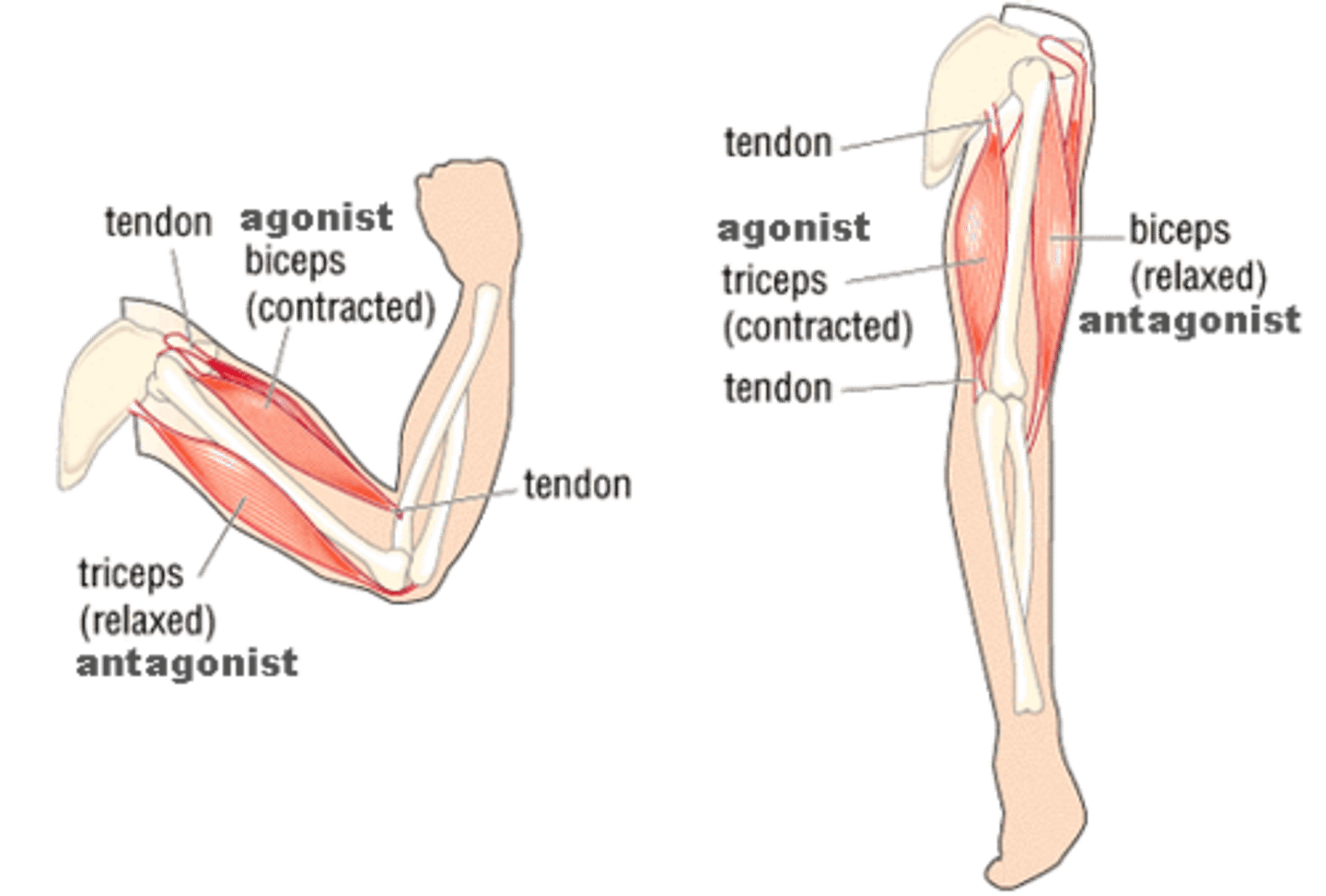
antagonist muscle action
muscles having the opposite action of agonist
ex: while doing a bicep curl, the agonist will be the biceps and the antagonist will be the triceps
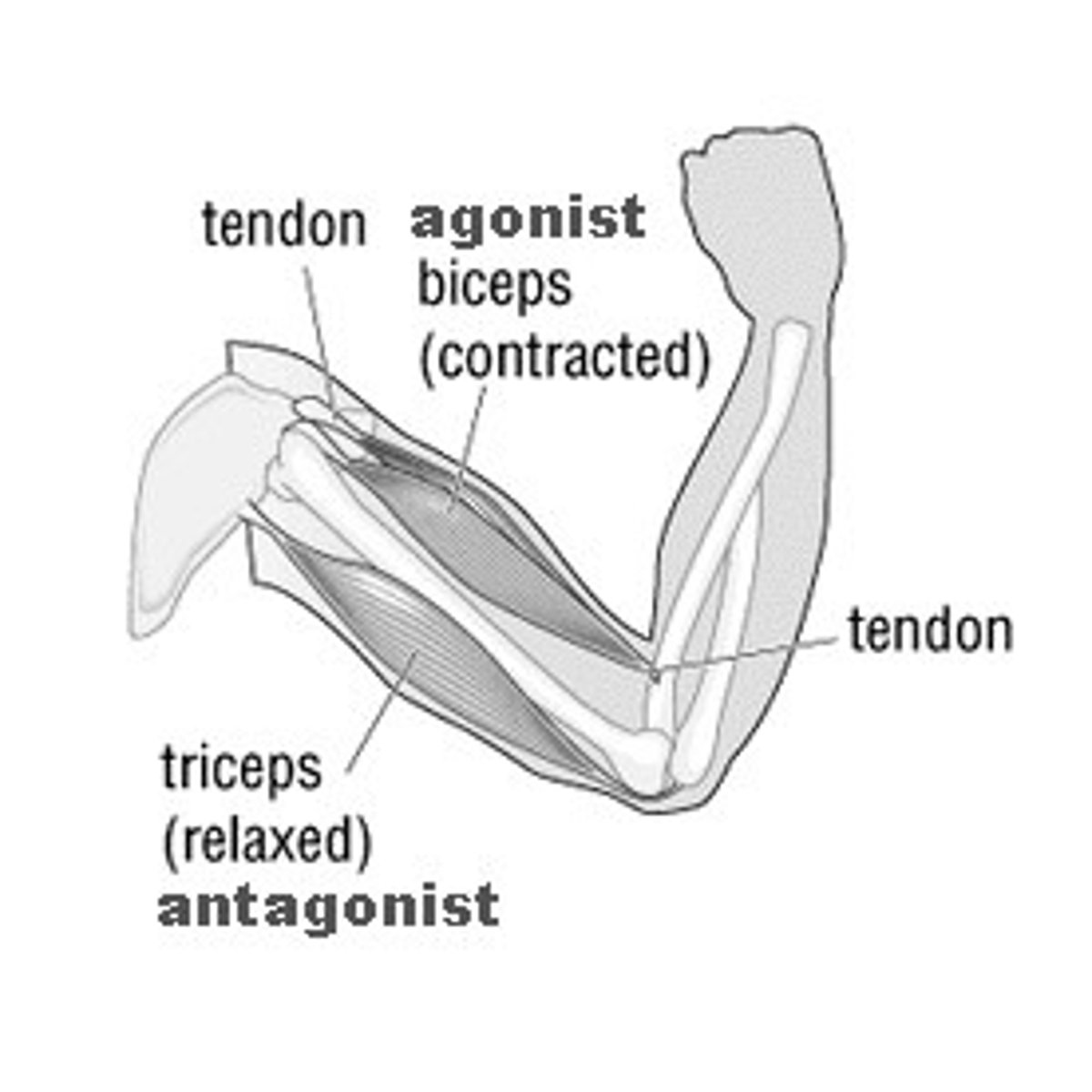
synergist muscle action
a muscle that contracts at the same time as a prime mover and assists it in carrying out its action
ex: brachialis is the synergist because it assists the biceps brachii when lifting a cup up
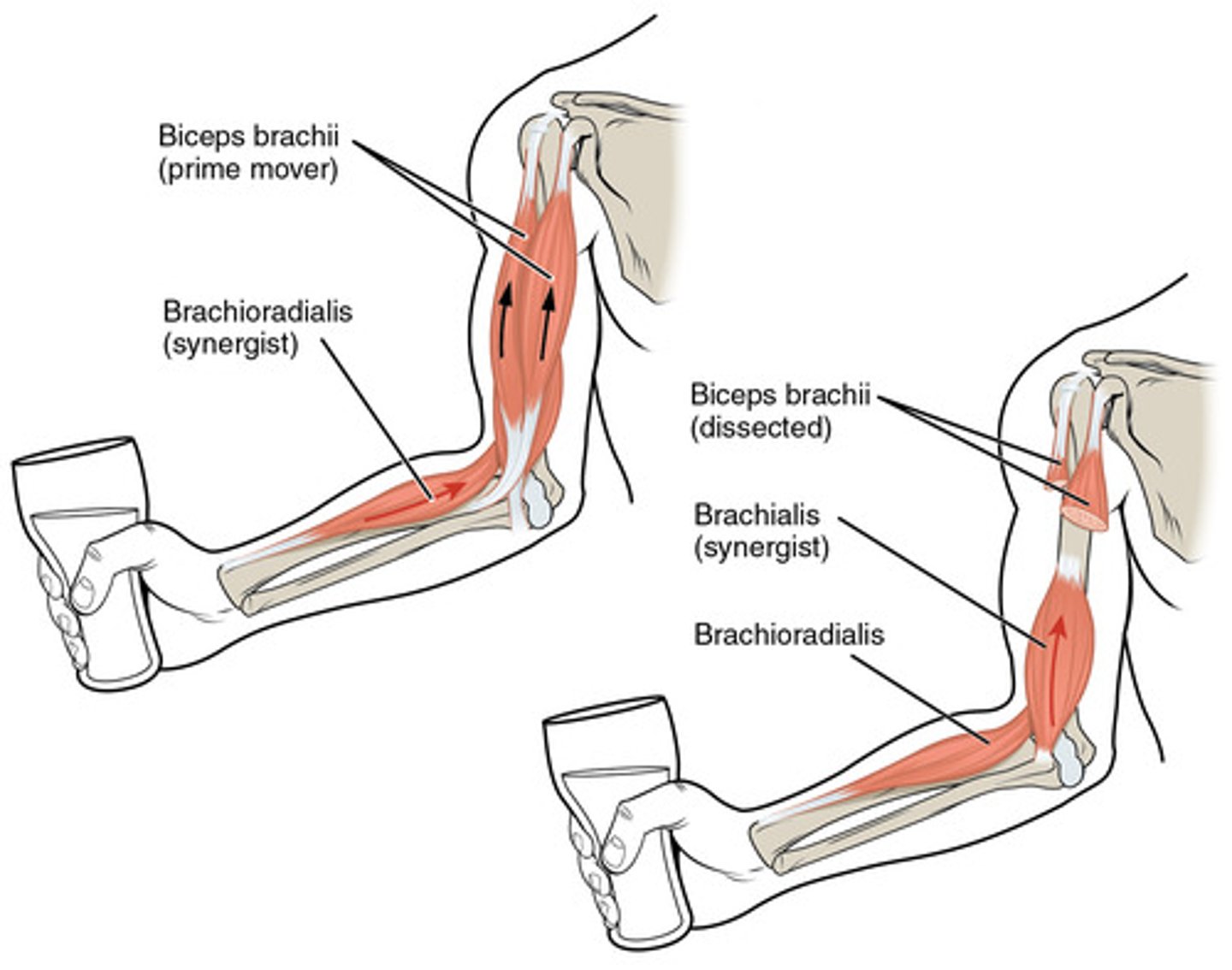
force couples
2 or more muscles on opposing sides of a joint work together to provide joint stability/create movement
